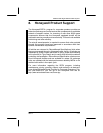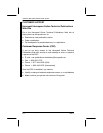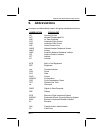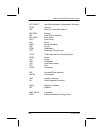
PRIMUS
r
880
Digital
W
eather
Radar
System
A28-1146-102-00
Federal Aviation Administration (FAA) Advisory Circulars
A-2
Background
Dangers from ground operation of airborne weather radar include the
possibility of human body damageand ignition of combustible materials
by radiated energy. Low tolerance parts of the body include the eyes
and the testis.
Precautions
Management and supervisory personnel should establish procedures
for advising personnel of dangers from operating airborne weather
radars on the ground. Precautionary signs should be displayed in
affected areas to alert personnel of ground testing.
GENERAL
D Airborne weather radar should be operated on the ground only by
qualified personnel.
D Installed airborne radar should not be operated while other aircraft
is in the hangar or other enclosure unless the radar transmitter is not
operating, or the energy is directed toward an absorption shield
which dissipates the radio frequency energy. Otherwise, radiation
within the enclosure can be reflected throughout the area.
BODY DAMAGE
To prevent possible human body damage, the following precautions
should be taken:
D Personnel should never stand nearby and infront of a radar antenna
which istransmitting. When the antenna is not scanning, thedanger
increases.
D A recommended safe distance from operating airborne weather
radars should be established. A safe distance can be determined
by using the equations in Appendix 1 or the graphs of figures 1 and
2. This criterion is now accepted by many industrial organizations
and is based on limiting exposure of humans to an average power
density not greater than 10 milliwatts per square centimeter.
D Personnel shouldbe advised to avoidthe end of an open waveguide
unless the radar is turned off.
D Personnel should be advised to avoid looking into a waveguide, or
into the open end of a coaxial connector or line connector to a radar
transmitter output, as severe eye damage may result.


















